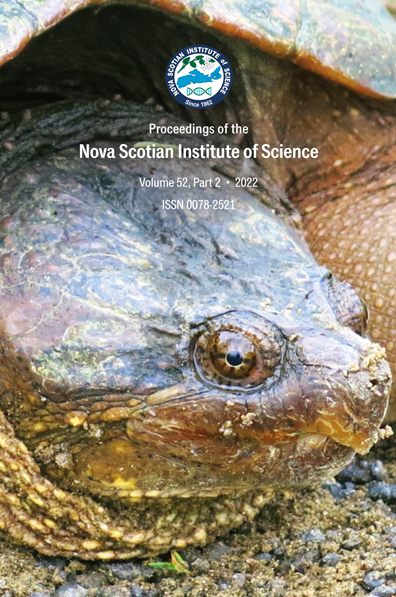Carbon cycling and redox chemistry in an anoxic marine basin, Bras d‘Or Lake, Nova Scotia
DOI:
https://doi.org/10.15273/pnsis.v52i2.11495Abstract
Measurements of oxygen, methane, pCO2, total dissolved inorganic carbon, total alkalinity, sulphide and nutrients were made in June, October and December 2017 in Whycocomagh Bay, a small marine basin at the western end of the Bras d‘Or Lake estuarine system in Cape Breton, Nova Scotia. Dissolved oxygen was absent in the deep basin, similar to observations made in the years 1974, 1995-1997, and 2009-2021. Profiles of total dissolved inorganic carbon and total alkalinity were largely consistent with the sulphate reduction of particulate organic matter, having a Redfield stoichiometry of 106C:16N:1.6P. The concentration of dissolved methane ranged between 19-35 nmol L-1 (727-1147% saturation) above the thermocline, and reached 34.74 µmol L-1, (931,900% saturation) in the deep anoxic zone. The potential rate of microbial methane oxidation at the base of the oxycline, determined from an incubation experiment, was 0.34 µmol L-1 d-1, potentially acting to mitigate the flux of methane to the atmosphere. Deep water H2S concentrations ranged from 747 to 1,074 µmol L-1, more than a tenfold increase since the 1995-1997 study, with substantial increases also in ammonium and phosphate concentrations, likely as a result of eutrophication over the last two decades. Whycocomagh Bay presents an opportunity to study extreme marine redox chemistry at an easily accessible site.
Keywords: Anoxic, methane, carbon cycle, carbon dioxide


